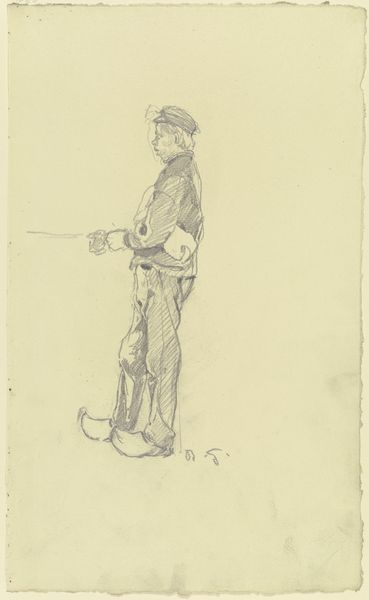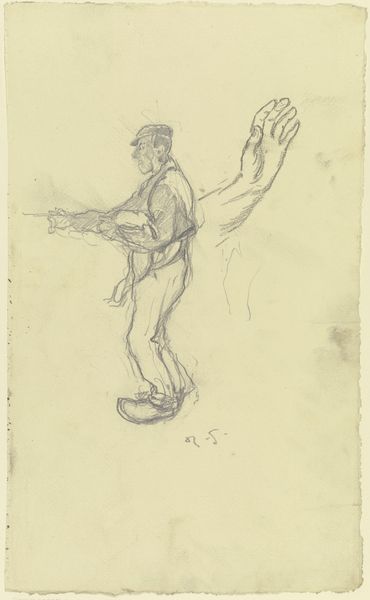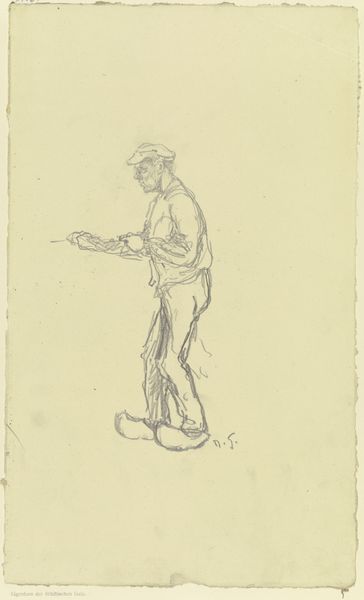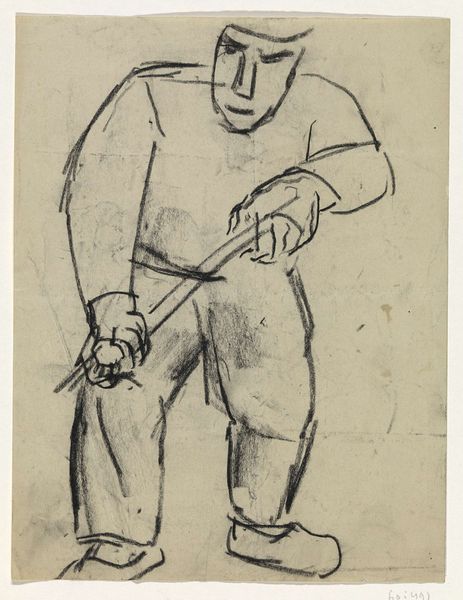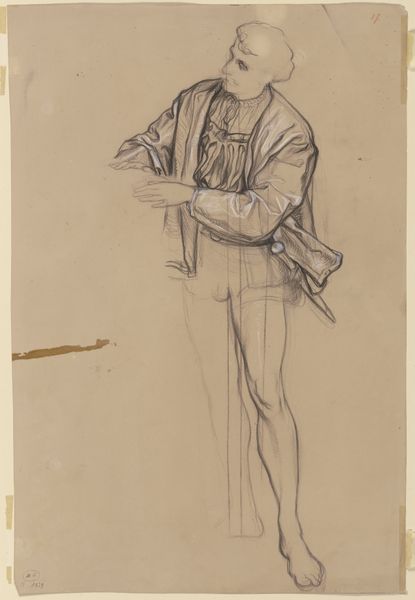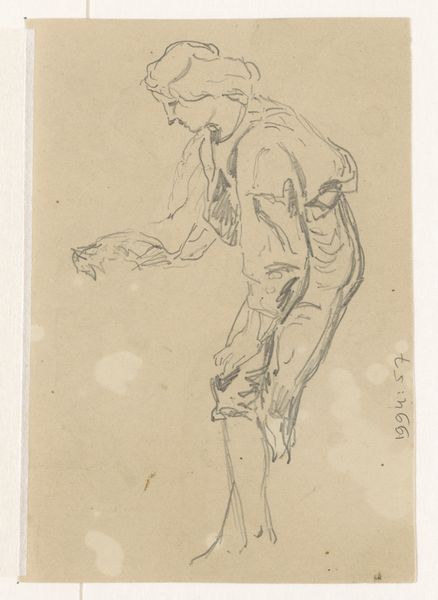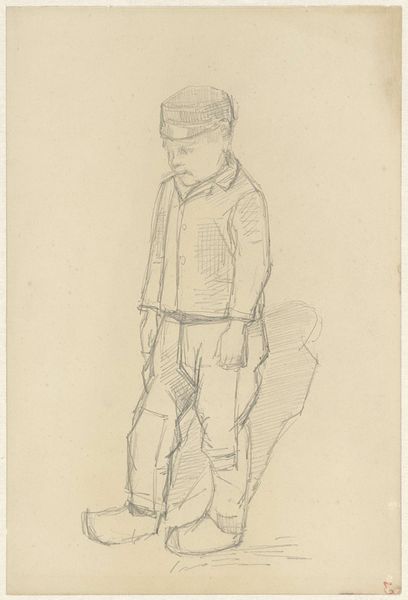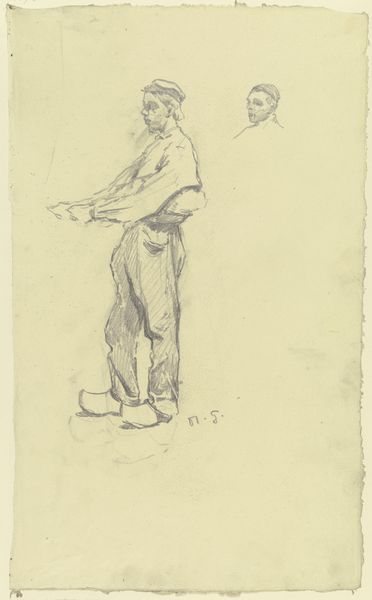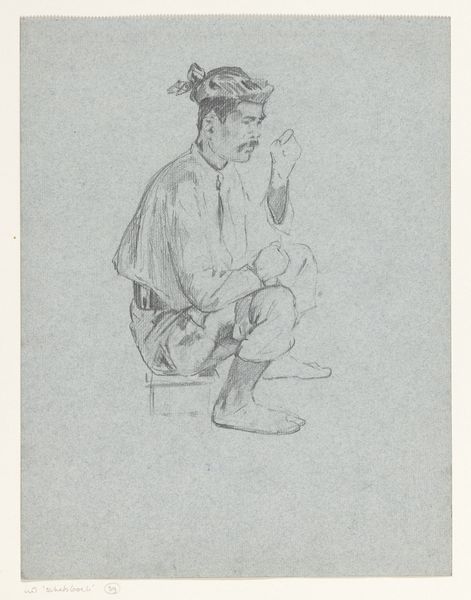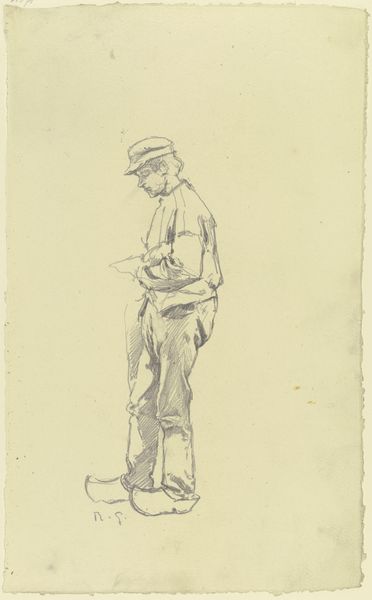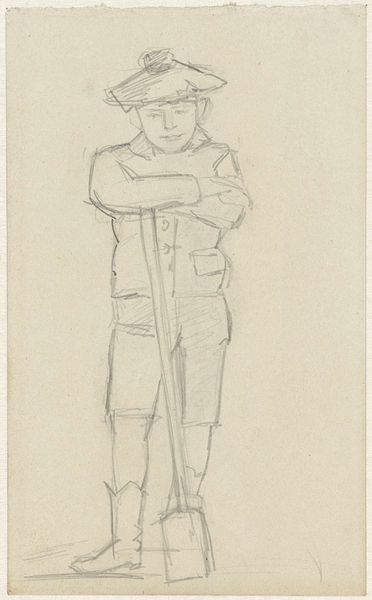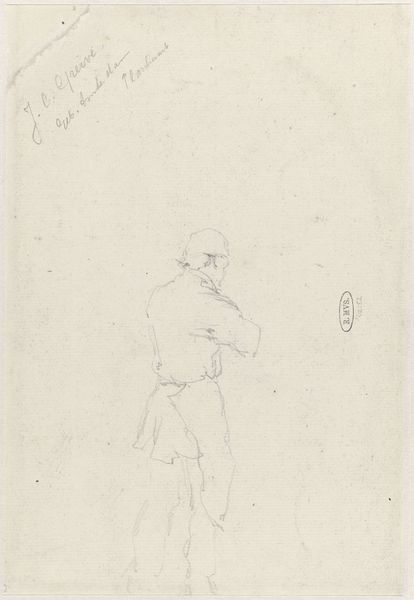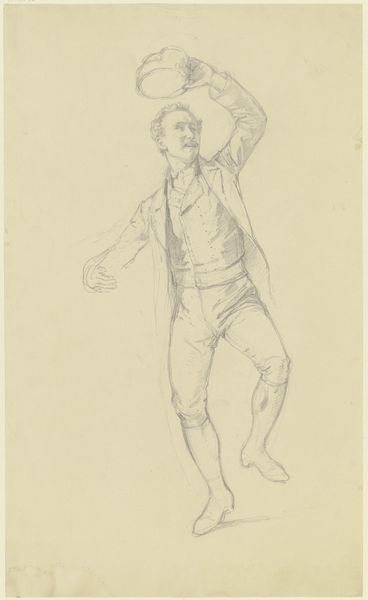
drawing, pencil
#
portrait
#
drawing
#
comic strip sketch
#
imaginative character sketch
#
light pencil work
#
dutch-golden-age
#
pencil sketch
#
figuration
#
personal sketchbook
#
idea generation sketch
#
ink drawing experimentation
#
sketch
#
pencil
#
sketchbook drawing
#
pencil work
#
sketchbook art
#
realism
Dimensions: height 443 mm, width 309 mm
Copyright: Rijks Museum: Open Domain
Curator: Here we have "Standing Man with Extended Arm" by Richard Nicolaüs Roland Holst, created in 1903. It's currently held here at the Rijksmuseum. Editor: Immediately, I'm struck by its raw quality. It's a simple pencil drawing, yet it possesses this incredible presence. It almost feels like a captured moment. Curator: Exactly. Look at the type of paper Holst is using – a readily available sketch paper, nothing fancy. The pencil work is economical, focused. This isn't about creating a highly finished product; it's about documenting a moment, a posture. It feels immediate and unfiltered. Editor: Considering the period, I wonder about the figure’s social class. His clothing – a simple cap, open-necked shirt, and what look like work trousers – speaks volumes. It makes me wonder about the role of the working class at the beginning of the 20th century in the Netherlands and whether Holst intended to valorize the laboring body. Curator: That's astute. Holst was part of a movement interested in craft and labor. Consider the relationship between artist and subject—did Holst know this man? What labor might this pose suggest, reaching towards a horizon of change, or simply a casual moment of repose? It prompts reflection on labor, artistic process, and what exactly makes an image worthy of our attention. Editor: The gesture, with his arm extended, could signify invitation or demand. It's really quite ambiguous. Looking closely at the detail of the drawing, you see how Holst captures this feeling by using thin lines, capturing subtle expressions and textures. Curator: Notice too how Holst isn't necessarily aiming for photorealistic accuracy. The proportions are slightly off, but that only adds to its charm. I imagine he probably produced many images like this—learning by practicing. Editor: Absolutely, that imperfection brings intimacy. It allows us to connect with the figure not as a historical figure, but as someone accessible. Curator: By thinking about process, materiality, and its socio-historical roots, we glean more than the visual facts presented. Editor: Ultimately, this drawing allows us to speculate and weave histories, reminding us of the social narratives imbued in the simplest forms of art.
Comments
No comments
Be the first to comment and join the conversation on the ultimate creative platform.
